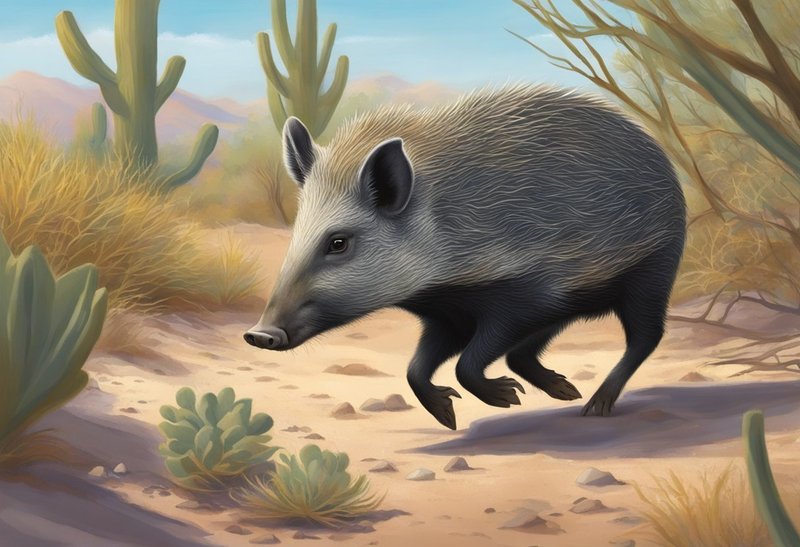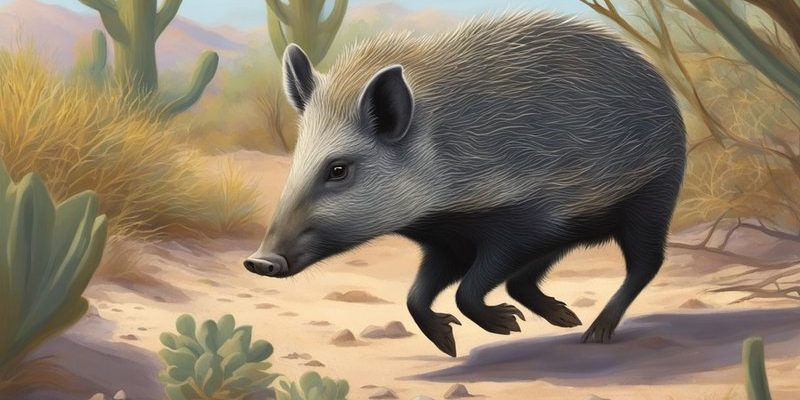
Imagine you’re sitting in a café, sipping your drink, and across the table, I’m sharing the details of javelinas. These animals navigate their world by relying mostly on their keen sense of smell, allowing them to hunt down food even in the dense desert underbrush. From understanding their diet to learning about their social behavior during foraging, there’s a lot to uncover about these remarkable creatures.
What Exactly is a Javelina?
Before diving into their diet and hunting strategies, let’s introduce the javelina. Scientifically known as the *Pecari tajacu*, these animals are part of the peccary family, which is distinct from true pigs. Size-wise, they typically weigh between 50 to 90 pounds and measure around 3 feet in length. They have a stout body, short legs, and a bristly coat that usually ranges from dark brown to gray.
You might not realize it, but javelinas are social creatures, often found in groups, or what they call “sounders.” They’re known for their strong sense of smell, which they use to communicate and find food. Think of them as little detectives of the desert, sniffing out their next meal while keeping a close-knit community around them.
The Javelina’s Nutritional Needs
Javelinas are herbivorous, meaning they primarily eat plants. Their diet is diverse and changes with the seasons, adapting to what’s available. They munch on roots, fruits, seeds, and leaves, often foraging for food during the cooler parts of the day.
Here’s a peek into their preferred diet:
- Fruits: Cacti and mesquite pods are favorites, providing hydration and essential nutrients.
- Roots and Tubers: They dig into the ground in search of these delicious treats, using their strong snouts.
- Herbs and Grasses: In addition to tougher vegetation, they enjoy soft herbs, adding variety to their meals.
This diverse diet is vital for their health. Depending on the season, javelinas will shift their focus based on availability. In the summer, when cacti are abundant, they feast on the sweet, juicy pads and fruits, while in the cooler months, they might turn to roots and underground foods.
How Do Javelinas Hunt for Food?
When you think about hunting strategies, you might picture an elaborate chase. For javelinas, the hunting strategy is more about foraging than actual hunting. They use their powerful sense of smell like a GPS, sniffing out food sources in their environment.
Here’s how they approach their “hunting”:
- Sniff and Search: Their keen olfactory senses allow them to detect food buried under the earth or hidden in dense vegetation.
- Group Foraging: Moving in sounders, they cover more ground together, sharing information about where food can be found.
- Digging for Grubs: Javelinas can dig impressive holes to unearth roots and tubers. It’s like watching tiny bulldozers at work!
By working together, javelinas are efficient foragers. If one member of the sounder finds something good, the others quickly join in, creating a bustling feast scene!
Seasonal Changes in Diet
Dietary needs change with the seasons in the wild, and javelinas are no exception. In the spring and summer, their diet is rich in fruits and succulent plants, which provide plenty of moisture. As the weather cools down, the availability of these food sources decreases, pushing javelinas to adapt their eating habits.
Here’s a breakdown of these seasonal shifts:
- Spring: Wild fruits and young cacti are abundant, keeping the javelinas well-fed and hydrated.
- Summer: They dig deeper for tubers, as surface vegetation may start to dry out.
- Fall: Javelinas enjoy acorns and other seeds, which become a staple as their preferred foods diminish.
- Winter: It’s all about foraging for the toughest roots and shrubs, and they sometimes venture further distances to find food.
Adapting to the changing seasons ensures their survival. Being flexible is crucial; if the food isn’t available, they move to find what they need.
Social Dynamics During Foraging
Javelinas are not solitary animals; they thrive on social interactions. Foraging in groups allows them to pool their resources and protect each other. Think about it: there’s safety in numbers! When one javelina senses danger, it can alert the rest, giving them a better chance to evade predators.
Here’s how these social dynamics play out:
- Communication: Javelinas communicate through a range of vocalizations and body language, helping them coordinate their foraging efforts.
- Hierarchy: Within sounders, there’s often a dominant individual that leads the group to food and determines foraging routes.
- Shared Knowledge: Older javelinas share their knowledge of the best foraging spots with younger ones, ensuring their survival.
Their social behavior is fascinating and crucial for thriving in their environment. The bond within a sounder is strong, often leading to a cooperative community.
Threats and Adaptations
Despite their adaptability, javelinas face threats from predators and habitat loss. Keeping their diet balanced serves as a primary form of defense. When they are well-fed, they can respond better to threats and evade predators.
Their adaptations include:
- Speed and Agility: Javelinas can run at speeds up to 35 miles per hour, allowing them to escape quickly.
- Camouflage: Their coloring helps them blend into their desert surroundings, making it harder for predators to find them.
- Courageous Behavior: When threatened, javelinas sometimes stand their ground and puff up to intimidate predators.
By being aware of their surroundings and ready to adapt, these animals have a better chance of surviving in a world filled with challenges.
Javelinas play a significant role in their ecosystem. Their foraging habits help disperse seeds and promote plant growth, contributing to the health of their environments. They are like tiny gardeners, ensuring that their home remains vibrant and diverse.
In summary, understanding the diet and hunting strategies of javelinas gives us insight into their complex lives. They teach us the importance of adaptability, community, and resilience in the wild. So next time you think about these fascinating creatures, remember the little intricacies that allow them to thrive in their desert homes. Their world is rich with lessons about survival and cooperation, things we can all appreciate in our daily lives.

